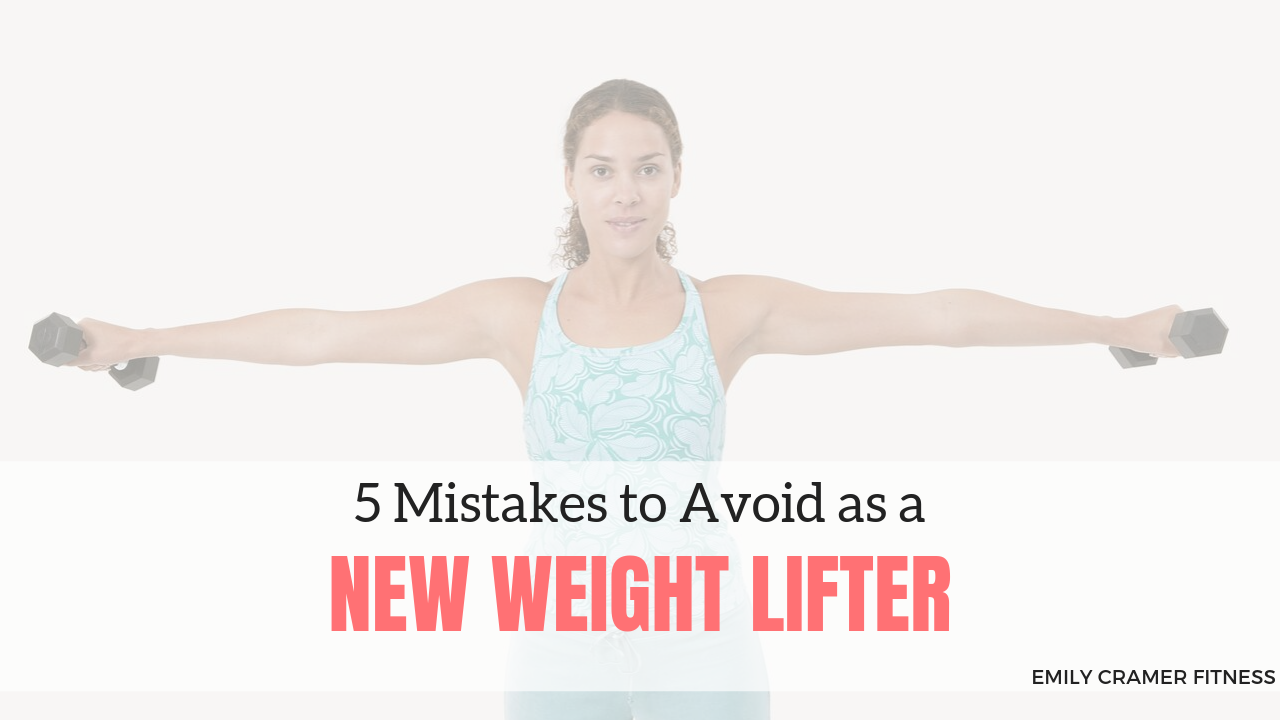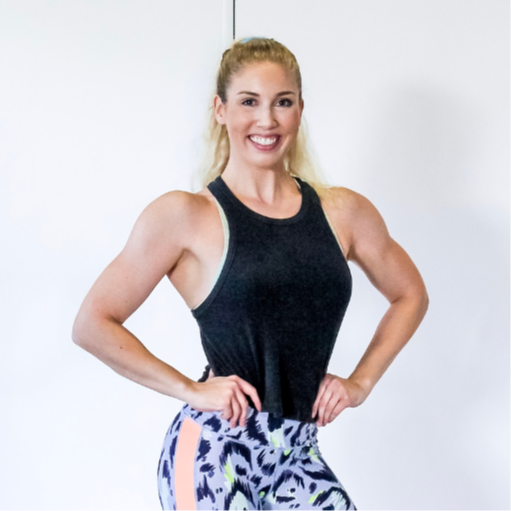
5 Mistakes to Avoid as a New Weight Lifter
With so much contradictory information out there, it can feel overwhelming to figure out your game plan as a weight lifting newbie. There are a few mistakes I find most often in new lifters (some of which I myself was guilty of when I started!) This list covers 5 of the most common mistakes you should avoid as you begin a weight lifting routine.
1. Thinking You Need to Bulk

I was definitely guilty of this assumption when I first started weight lifting. Bulking is not necessary to build muscle. There are a few things to note here.
As a new weight lifter, you can actually build a significant amount of muscle while losing fat in a calorie DEFICIT. (A deficit is when you’re burning more than you’re consuming.) Therefore, if you’re someone who’s just getting started, if you would like to tackle both of these goals at once, you CAN. You will see significant progress in both goals at the same time because your body has not yet adapted to an intense, consistent training stimulus.
If you’re not trying to cut or lean out, you can build muscle at maintenance calories as well. Your maintenance calories are the calories you need to maintain your current weight. This means no changes need to be made to your current intake to develop muscle. For most people, this is perfectly sufficient.
The idea that you need to suddenly maximize your food intake and put on excess body fat to build muscle is just not true or a healthy approach to fitness.
2. Skipping Muscle Groups

Your body is a giant chain - it’s referred to as the kinetic chain. Everything is connected, so the way that you train one part of your body affects the rest. When you start overtraining and under training different areas, you create over and under active muscles.
In the case of over active muscles, the muscles become short and tight. Under active muscles become lengthened. This affects your form during different lifts.
If the primary mover during a movement (the main muscle that is SUPPOSED to make the movement happen) is considered under active, the stronger synergist muscles (the muscles that are only meant to assist the prime mover in performing the exercise) take over to complete the movement.
This creates irregular movement patterns and can lead to injury. One of the best ways to prevent these imbalances is to give attention and time to each muscle group, ensuring that your whole body stays strong and able.
3. Going Heavy on Cardio

Cardio is great for you and should definitely be a part of your routine! But too much cardio can directly interfere with your ability to build muscle.
It’s perfectly reasonable to incorporate some cardio 3-4 days per week, even if your primary goal is to build. It begins to interfere when you are doing hours upon hours on the treadmill. Listen to your body and be reasonable with your time spent doing cardio.
4. Over Training

When you weight train, you’re essentially tearing the muscle down to build it back up bigger and stronger. But if you don’t give the muscle time to recover post lift, it doesn’t receive the necessary time to repair.
Make sure you’re waiting at least 48 hours to retrain a muscle in order to ensure proper recovery in between. Again, listen to your body! If a certain part of your body is sore, do not train it again until it has recovered.
Counterintuitively, we don’t want to routinely train the muscle to total soreness. This isn’t productive because it reduces how frequently we can train that muscle.
5. Lifting Weight that’s Too Heavy

I see even the most experienced lifters doing this and it’s not a productive way to get your workout done. You should aim to select a weight that feels challenging enough for your set but not so challenging that you’re sacrificing your form or failing on the last rep of every set.
Many lifters select a weight that feels heavy but “doable” to lift upward. But once they reach the top of the movement, they “drop” the weight. You actually lose the opportunity for maximum strength and muscle gain this way.
The lowering portion of the movement (or the portion of the movement during which the weight is moving in the same direction as gravity), is called the eccentric portion of the exercise. This is where the biggest strength gains occur if you’re controlling the weight through it.
Select a weight at which you can not only lift the weight upward, but lower it in a slow, controlled fashion. You will see more results than you will lifting heavier with poor form.
Want more guidance as you get started?
I've been helping women just like you reach their body goals for over a year - from weight loss to competition goals to metabolic rehabilitation to muscle gain.

If you're ready for the rest of my workout and nutrition secrets and want to transform your body the fun way, APPLY HERE for a customized training and nutrition program. I will be there to coach you every step of the way so we can get you better, lasting results.
Not convinced? Check out some of these amazing success stories from women JUST LIKE YOU. Stop telling yourself you're too old, too far off, too busy, too tired. You are NONE of these things!
No more waiting for the perfect time. There will never be a perfect moment. The time to make a change is always RIGHT NOW! Let me show you what you can do.
Pin This for Later







